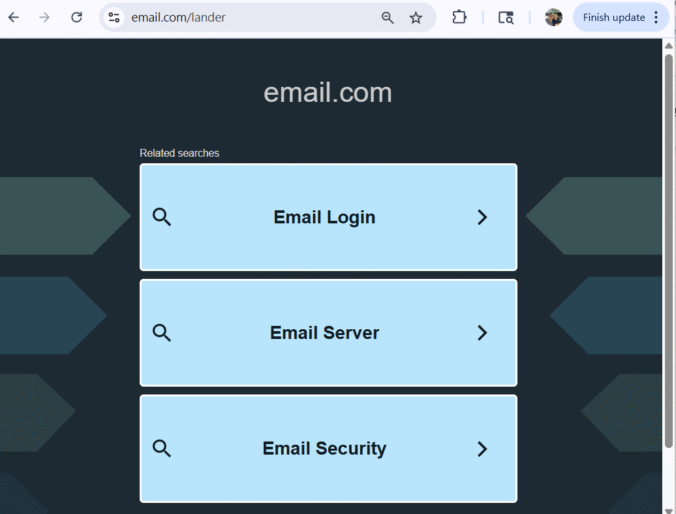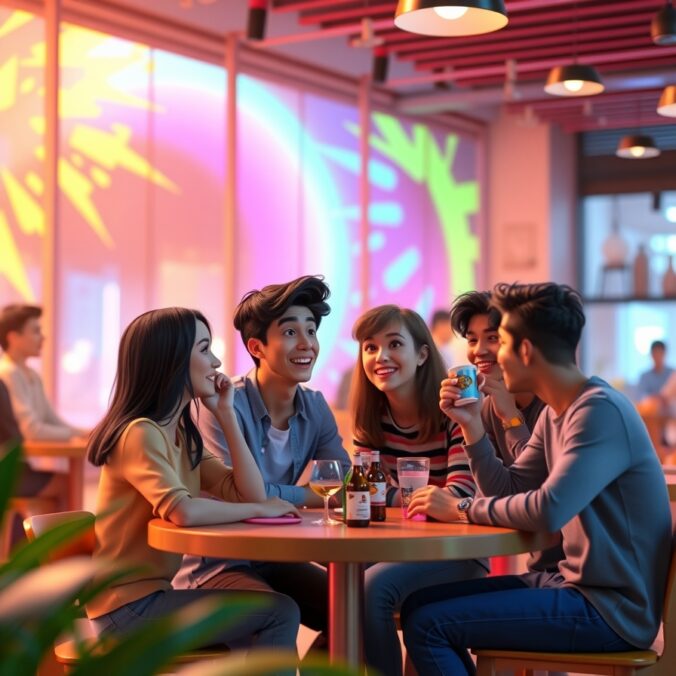I’d love to know the story why a high value url like Email.com sits unused. Surely some company has the capital to buy the url and redirect it to their own email platform. Gmail? Heck, it seems like just the thing Microsoft would do to boost traffic to Bing. Anyone know the story?
Author: Andy (Page 1 of 27)
What would Dave Niehaus said about this season? We can only imagine it might have sounded something like this.
Read more: Dave Niehaus on the Magic of the 2025 Mariners SeasonMy, oh my!
You could feel it from Opening Day. The hum in the rafters, the crackle in the air, the smell of garlic fries wafting down from the left field stands. This 2025 Mariners team, this band of young guns and seasoned pros, had that twinkle in their eye from the very first pitch.
Julio. That kid… he’s not a kid anymore, but still, he’s got that spark, that Griffey glint in his swing. The way he danced around the basepaths, juking catchers and juking fate. He didn’t just play baseball—he told stories with that bat.
And let’s not forget the big fellas on the mound. Woo< Castillo, Kirby, Gilbert. One, two, three, four – punch, punch, punch, punch – mowing down lineups like wheat in Wenatchee. Each game they pitched, it was like poetry painted with four-seamers and sliders. If the batter blinked, it was already too late.
Then you had Cal’s 60 dingers. Julio tracking down everything in his no-fly zone. But the soul of this team wasn’t just in the stars. It was in the grind. Jorge Polanco with improbable hits. Naylor stealing bases like he was Rickey Henderson. The whole damn dugout charging the field like a Little League team that just won State.
And the fans, oh, the fans. From Pioneer Square to the upper deck of Section 341, Seattle came out in droves, draped in teal and belief. They sang. They cheered. They danced to the Hydro races. They believed.
It wasn’t about stats, no sir. It was about magic. That 11-game winning streak in June. The come-from-behind thumper in Houston. The walk-off grand salami against the Yankees. Each game felt like an extra scoop of Tillamook, like a fourth firework on the Fourth of July.
And when they clinched the division! That moment, folks! I swear the sky over T-Mobile lit up with stars that hadn’t twinkled in 25 years. People hugged strangers. Kids stayed up late. The ghost of 1995 exhaled.
This was not just a baseball season. It was a revival. And if you ask me, this team didn’t just bring Seattle back to baseball. They brought baseball back to Seattle.
Now grab your rally garlic fries, Mariners fans. We’re just getting started.
While the changing leaves of October might dazzle tourists, for many Seattle residents, the tail end of the month marks the beginning of a mental health dip. A recent survey of 100 clinical psychologists and mental health researchers sheds light on why late October, in particular, tends to be a mood sinkhole in the Emerald City.
1. The Light Switch Effect
Dr. Maria Klein, a seasonal affective disorder (SAD) specialist, notes that around October 25, Seattle sees a sharp decline in sunlight, often losing 2–3 minutes of daylight per day. “It’s not just gradual darkness,” she explains. “It’s the suddenness that jolts the brain’s serotonin production.”
2. Anticipatory Anxiety of the Holidays
October 31 is the gateway to what many describe as “The Gauntlet.” Halloween to New Year’s. “People start to feel behind before the holidays even begin,” says Dr. James Leung, who treats anxiety disorders. “There’s financial stress, family stress, even decor stress.”
3. Disrupted Routines
The combination of sugar-laden diets, shifting school schedules, and daylight savings wreaks havoc on circadian rhythms. Sleep deprivation becomes common, which researchers unanimously agree is a major trigger for low mood and irritability.
4. Rainy Season Triggering Loneliness
By late October, the long streaks of gray begin. Many psychologists cited a phenomenon they called “damp withdrawal.” Dr. Carla Nguyen describes it as “a subtle tendency to stay inside more, socialize less, and feel cut off without realizing it.”
5. Reemergence of SAD Symptoms
Seattle’s SAD rates are some of the highest in the nation. Psychologists recommend light boxes starting mid-October, not after the gloom sets in. “By the time someone’s depressed, the light therapy has to work twice as hard,” says Dr. Ryan Patel.
Coping Tools?
Experts suggest three key strategies:
- Front-load social plans before November.
- Double down on exercise during daylight hours.
- Use light therapy proactively, not reactively.
So if you’re feeling grumpy, foggy, or oddly nostalgic in late October, you’re not alone, you’re just human, in Seattle, at exactly the wrong time of year.
You know the future is strange when your best shot at a stable career is majoring in “Robot Psychology” or “Data Plumber.” Thanks to the AI revolution which, for those keeping track, promised to free us from work but instead retrained us to make ChatGPT write emails, we now face a curious inversion of the job market.
Here, then, are the top 10 college degrees predicted for the Class of 2035:
1. Prompt Engineering
Because writing good AI prompts is harder than writing haikus. Future students will spend four years studying the subtle difference between “generate an image” and “create a vibey aesthetic.”
2. AI Babysitting
Technically called “Algorithmic Alignment Oversight.” Sounds better than “making sure the toaster doesn’t become sentient.”
3. Deepfake Forensics
Because nothing says “future of truth” like entire majors devoted to identifying whether Grandma actually said that racist thing on video.
4. Digital Waste Management
Yes, even your chat history needs recycling. These grads sort useful AI outputs from the prompt pollution. Picture a compost bin, but for memes.
5. Human History 101 (Again)
A reintroduced major after AI erased everything pre-2020. Students read actual books and sometimes make fire.
6. Emotional Interface Design
Designing virtual assistants that sound empathetic when you ask them to play your Sad Playlist. “I’m here for you, Chad,” says Siri 12.0.
7. Manual Labor Theory
This is taught exclusively by grizzled Boomers who live in barns and teach kids how to fix stuff with screwdrivers. Enrollments have tripled.
8. Meme Law
A new branch of IP law where students debate whether Pepe the Frog is free speech or a federal offense.
9. Post-Human Ethics
Philosophy majors, rejoice! You finally have a reason to exist—deciding whether AI dogs have feelings.
10. Therapy for AI Survivors
Counselors trained to work with humans who just found out their ex was a chatbot named Trevor.
And so, as the ivy-covered halls prepare for a generation raised by iPads, one thing remains clear: the future is bright, weird, and has suspiciously good grammar.
We stress about things we cannot truly control,
But miss the synchronicities that brought us here.
Countless decisions beyond us led to this moment,
We are mere characters in this unfolding story.
The forces that brought us here know something,
The universe moves us where energy flows naturally.
Trust our instincts, don’t fight the current direction,
Forces guide us for reasons we cannot fathom.
David Bayer, author and creator of “A Changed Mind,” has this simple formula I like:
Desire plus barrier removal equals desired outcome.
In plain English, most of us know what we want: more customers, more sales, more traction. But we forget the “barrier removal” part. And honestly, that’s where most marketing strategies get stuck.
Don’t Chase Shiny Objects Yet
It’s easy to think the next big thing will save the day. A TikTok campaign, a hot new CRM, some influencer deal. These things are cool to talk about at cocktail parties and networking events. (Plus, ad agencies will make you feel really special.) But truthfully, you don’t need another shiny object. You need to fix the stuff that’s already slowing people down.
Continue readingI use Leonardo.ai as my go-to image generator, and recently their Senior Creative Technologist published a 27-page paper on “vibe marketing.” As a technology partner for creatives, when Leonardo publishes something that in-depth, it is worth paying attention. Seeing it explored at that level of detail piqued my interest and pushed me to dive deeper into the idea.
Continue readingDisruptive weather is noticed because it’s not everyday,
We cannot control chaos swirling all around us.
But we can trust that chaos will pass,
Chaos is fleeting while our patience truly endures.
Real strength can be found in quiet confidence,
Don’t trust the fearful reports from other people.
Look deep within, we know that staying strong
Gets us through better than yelling into wind.
Hook (3 seconds)
Most product messages fail because they start at the end. They lead with facts before earning the right to be heard. But people need something to grab their attention first.
Tease (30 seconds)
That’s why I work with something I call the 3-30-3 Rule. It isn’t a formula carved in stone, but a useful guide. The premise is simple:
Continue readingHow We All Missed the Crimes, Trauma, and Weirdness in Classic Kids’ Books
When you’re a kid, you just roll with the plot.
When you’re an adult, you realize half the books we grew up with are basically crime dramas… they just hide behind bright colors and rhymes.








